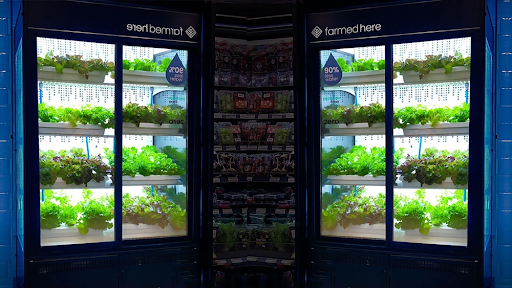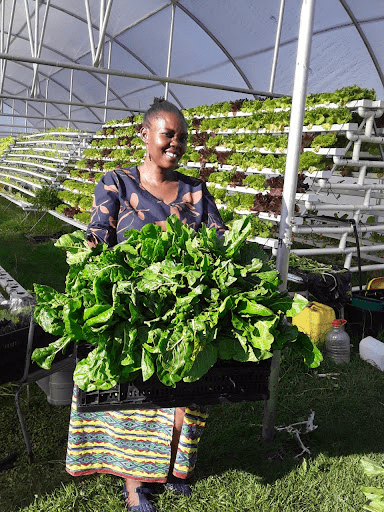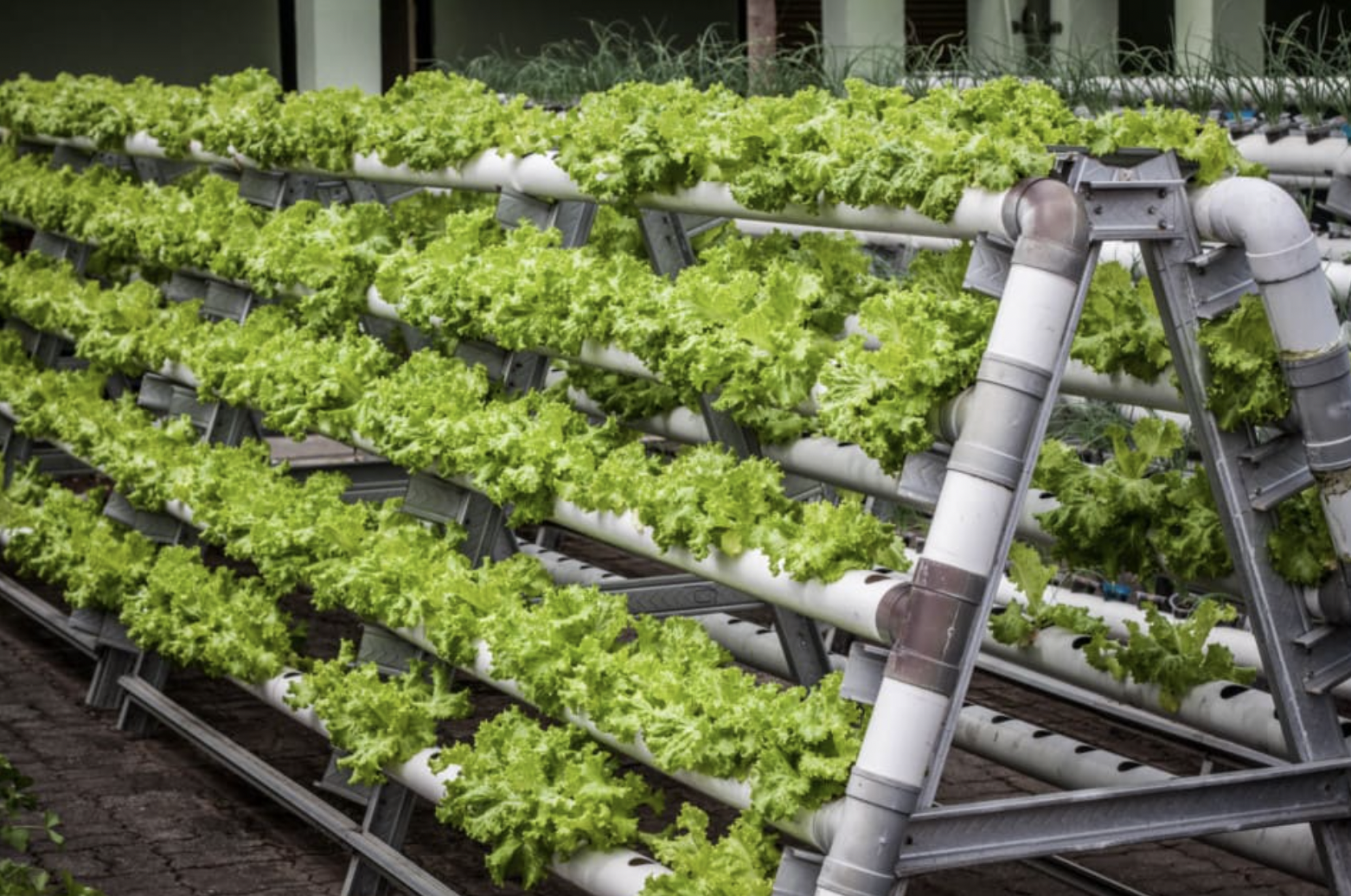Nov 14, 2022
Early-Stage Agrifood Investment in Africa is Taking Off. What Could This Mean for CEA?
One of Africa's most prominent and perhaps persistent challenges is food security. In 2020, 21% of people on the continent suffered from hunger, a total of 282 million people. For millions of Africans, decades of reliance on traditional farming techniques and poor policymaking have created vulnerabilities that are only worsened by the impacts of climate change and natural disasters. A recent report by McKinsey revealed that while Africa has large amounts of untapped agricultural land that could be used to increase production, much of this land is in unreachable areas. The lack of infrastructure, conflict zones, forest cover, and large conservation areas has made lots of arable lands inaccessible.
With the unfortunate realities of unpredictable weather patterns and periods of extreme food shortage remaining an ongoing concern, many have been forced to consider more sustainable agrifood solutions, prompting interest in new entrepreneurial endeavors within this market. As Africa experiences a rise in the volumes of venture capital flow, mainly directed towards the surging fintech sector, agrifoodtech startups are also attracting some of this attention. Data from the 2022 Africa AgriFoodTech Investment Report reveals that the number of seed stage deals rose nearly 70% in 2021, compared to an 8% jump the previous year, while overall agrifoodtech deals grew 250% from 2020.
The increasing number of seed-stage deals and early-stage fund launches across Africa lead to the question of whether there are ripe opportunities for CEA on the continent. With Africa being poised for fast growth, it is integral to consider whether CEA companies and investors have a valid shot at this budding market.
Africa's Agrifoodtech market is growing, but segmentation is an important indicator of key trends

Rabbit, a delivery startup located in Egypt, is a great example of startup funding capabilities in the African market. This startup funding could be valuable in creating a viable CEA market in the region. Credit: Tech Crunch.
AgFunder's Africa Agrifoodtech Investment Report reveals that deals rose steadily from 51 in 2017, to 99 in 2020, and 150 in 2021. More mature companies received the lion's share of the funding, but newly funded startups offering convenient services through tech were also attractive to investors. The seed stage deals generally favored e-Grocery and Agrifood fintech players seeking to improve food distribution in the supply chain and those strategizing to reach more consumers. The best example of the high interest in African companies has been Egypt's Rabbit – an e-grocery and delivery platform – which secured $11 million in pre-seed funding.
Another unique discovery is that just four countries: Egypt, Nigeria, Kenya, and South Africa - 'The Big Four' – secured 92.2% of the capital. A further breakdown indicates that Egypt claimed $186.1 million, with Nigeria securing $147.8 million, Kenya $88.5 million, and South Africa $22.1 million. A unique aspect to note is that most of these were seed-stage deals, with South Africa's Nomanini representing the only late-stage round.
Still, despite the exciting trend indicating that African investments are rising, it's important to note that African agrifoodtech represents just 10% of the VC pie and less than 1% of global agrifoodtech VC investment. Additionally, companies that secured the top funding levels are more “midstream” technologies – those in the supply chain that support the movement of goods between farmers and consumers. The second most popular investment category by amount of funding was agrifood fintech, where companies that enable financial inclusion for farmers and micro-businesses exist. The third and fourth most popular targets for investors were cloud retail infrastructure and e-Grocery platforms.
CEA operations in Africa are developing as a response to market pressures and new regulations

An urban farming installation from Schaduf, a biophilic design firm located in Cairo. Credit: Schaduf.
In 2017, the United Arab Emirates (UAE) banned imports from nations in the MENA region, which drew attention to the food security dilemma in the Gulf and North African regions. According to the UAE, the ban was necessitated by the high and unacceptable levels of pesticide residue in various products, including cauliflowers, cabbages, carrots, and eggplants. Among other countries in the Gulf region, Egypt, the most populous country in the Arab world, was affected by the harsh realities of the ban. However, amidst all the negative publicity caused by pesticides, an alternative way of growing safe and chemical-free produce rose to prominence: indoor agriculture.
While Egypt had been affected by the ban, the regulatory challenges provided an opportunity for the rise of new CEA alternatives. Unlike traditional farming, CEA has various advantages, including higher yields, lower water usage, efficiency of space, and the ability to replace pesticides with integrated pest management (IPM) strategies.
One of Africa's most revolutionary examples of CEA is the Egyptian company Schaduf. Addressing a challenge that many farmers and produce buyers know too well, Schaduf's innovation was to solve the short shelf life of most grocery store produce. Their idea was to introduce a lettuce-growing hydroponic farm inside a grocery store, eliminating the need for transport and keeping veggies out of waste landfills. “The consumer takes [the produce] fresh, and they can keep it fresh for another week to 10 days to use at home,” remarked the company's director, Malik Muhammad Taj El-Din.

A farm installed by Schaduf within an Egyptian grocery store allows consumers to get the freshest produce possible. Credit: Schaduf.
Another Egyptian company, Tulima, takes the challenge even further through its vertical hydroponic farms that utilize upcycled shipping containers. Zeina Salama, Co-Founder of Tulima confirms that they are all about changing how people think, including practicing recycling at every stage.
"It's not about recycling or using less water, but about changing the way we think. We increase yields by saving valuable fresh water on the smallest possible plot of land, using the least energy, and strictly avoiding harmful chemicals."
Yet, Egypt is not the only country leading in the race for controlled environment agriculture growth. In South Africa, another company, Clean Air Nurseries South Africa (CAN-SA), has designed a system that saves water and maximizes yield output. CAN-SA reports that it has refined water-use efficiency by designing and developing an advanced water-use system called EGGS (Environmental Green Growth System). The EGGS system reportedly utilizes an estimated 2,000 liters of water in a four-week production period to produce up to 600 kg of lettuce. This means that their system utilizes about 3.3 liters per 1kg of lettuce, which compares favorably to the 250 liters per kg used to produce lettuce in an open farm in Arizona, according to the 2021 CEA Census.
Barriers to CEA adoption in Africa

A vertical farmer in an outdoor/protected cropping environment in Africa showcases her harvest of leafy greens. Credit: Business Africa Online/Josephine Favre.
For now, much of what we see in Africa related to controlled environment agriculture is actually more focused on the soilless component and less so on the “controlled environment” piece. This makes sense given the lack of electrical grid reliability in much of the continent. Electricity rates also vary quite drastically from country to country, making true indoor vertical farming likely unattainable in certain high-cost energy countries. What this all means is that Africa is likely to see more adoption of hybrid strategies, such as hydroponics being done outdoors or under more affordable protected cropping solutions like a hoop house or naturally-ventilated greenhouse.
A study sponsored by the Commission on Sustainable Agriculture Intensification reveals that while CEA facilities and techniques are being adopted in Africa, they are not as advanced as operations in Europe or Asia. The authors explain that the minimal CEA techniques that have been witnessed in Africa have immense potential for sustainable agricultural intensification (SAI) by meeting the food and nutrition needs of a growing urban population.
One organization that has been making a splash in the African CEA space is Hydroponics Africa, a company headquartered in Nairobi, Kenya. Peter Chege, the CEO of Hydroponics Africa, shares that hydroponics became a niche approach for his company, allowing him to bridge the gaps between supply and demand. One innovation from the company has been its responsive drip irrigation (RDI), or what the company refers to as the Africa Intelligent Drip, which doesn't require electricity to water crops. Sharing some benefits of the system, Chege says, "The efficiency comes in because the system only gives water to the crops that show characteristics that signal they need more water."

Hydroponic fodder from innovative Hydroponic Africa, pioneer of the Africa Intelligent Drip method. Credit: Hydroponic Africa.
An example of the applications of CEA technology can be seen in perennially hunger-struck regions like the Sudan, where NGOs such as Welthungerhilfe have been sponsoring the adoption of hydroponics. In regions where nourishment and reach of crops like vegetables are limited, hydroponics projects have changed the narrative, making it possible for small landowners, families, and groups such as refugees to grow crops sustainably.
One example of a company seeking to popularize hydroponics in Kenya is Vertical Gardens. Fred Mwithiga and Fred Kimani, founders of Vertical Gardens, reveal that despite many benefits of hydroponics – such as maximizing space, yield, and water efficiency – the farming technique faces various challenges. Growers still believe that soil (compared to growing mediums) is essential, and the concept is too new for local growers.
"Hydroponics is still synonymous with growing flowers and not food. Therefore, we have nothing to compare ourselves to and this slows down buy-in."
These pertinent realities reveal that there might be some barriers to the adoption of CEA in Africa. The brief examination of the development of CEA in the industry reveals a need for more research into the region. Further exploration might reveal the economics of CEA versus conventional agriculture models and suggest areas where investors must dedicate their attention.

